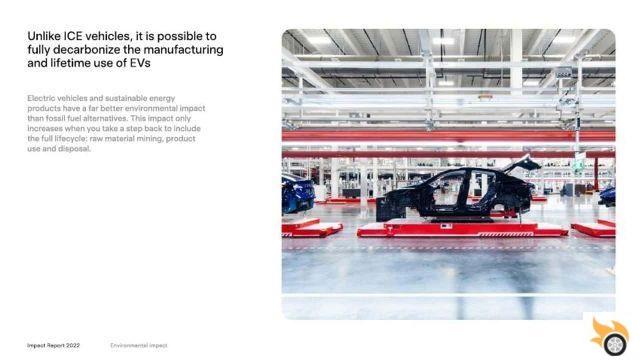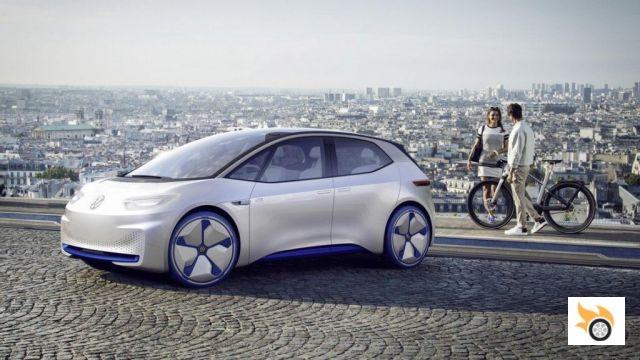
There are many studies that try to quantify theenvironmental impact of an electric car during its entire life cycle. They often do this by comparing the data with that of a traditionally fueled car.
Universal unit of measure
To measure the real level of sustainability of its cars, Tesla relies on equivalent CO2 emissions per mile (with one mile being equal to 1,609 km). To calculate them, not only the entire life cycle of cars is taken into account, but also the emissions of the supply chain and those deriving from the production and consumption of electricity during use. These are also defined according to the mix of renewables available in various regions: Europe, China and the USA.

The study also considers another variable. Calculate the emissions per mile if you recharge the Model 3/Y at home mainly using a photovoltaic system and a storage system or by connecting to the grid. In the first case, the emissions in the production phase are slightly increased due to the need for Solar Roofs and Powerwalls, but those relating to the use phase are zeroed, with final benefits.
A little numbers
In this case, the situation improves, dropping to 113 g of CO2 equivalent per mile (70,2 gCO2e/km) if you recharge in areas, such as New York, where the mix of renewables that feeds the public network is greater. In the USA, in any case, a thermal car of the same category as the Model 3/Y reaches 467 g of CO2 equivalent per mile (290,2 gCO2e/km).

In Europe and China the situation is slightly worse, but even a car with an internal combustion engine records higher values. In both cases it reaches a value of 487 g of CO2 equivalent per mile (302,7 gCO2e/km). In Europe, if you recharge at home with a photovoltaic system, a Tesla Model 3/Y reaches 148 gCO2e/mile (92 gCO2e/km), while if recharged from the grid it reaches 187 gCO2e/mi (116,2 gCO2e/km), dropping to 159 gCO2e/mi (98,8 gCO2e/km) if it is located in a more virtuous country than average of the European Community, such as Austria for example.

In China, on the other hand, if you recharge at home with a photovoltaic system, you get to 170 gCO2e/mi (105,7 gCO2e/km), while if recharged connected to the grid it reaches 290 gCO2e/mi (180,2 gCO2e/km), dropping to 161 gCO2e/mi (100,1 gCO2e/km) if it is located in a area where renewables are more present.
The scissor is bound to open
As demonstrated by the numbers pitted in the Impact Report (confirmed by the assessments of an independent body such as the Green NCAP) electric cars have less impact on the environment than traditionally powered cars.

Tesla, however, emphasizes another factor. Renewables are growing and are conquering ever greater percentages in the energy production. This means that electric cars, in the years to come, will reduce their environmental impact, while thermal cars will keep it constant. Thus the gap will become ever wider.
And progress in the field of batteries is not taken into account, which will be greater than those on traditional powertrains.
About Tesla



























